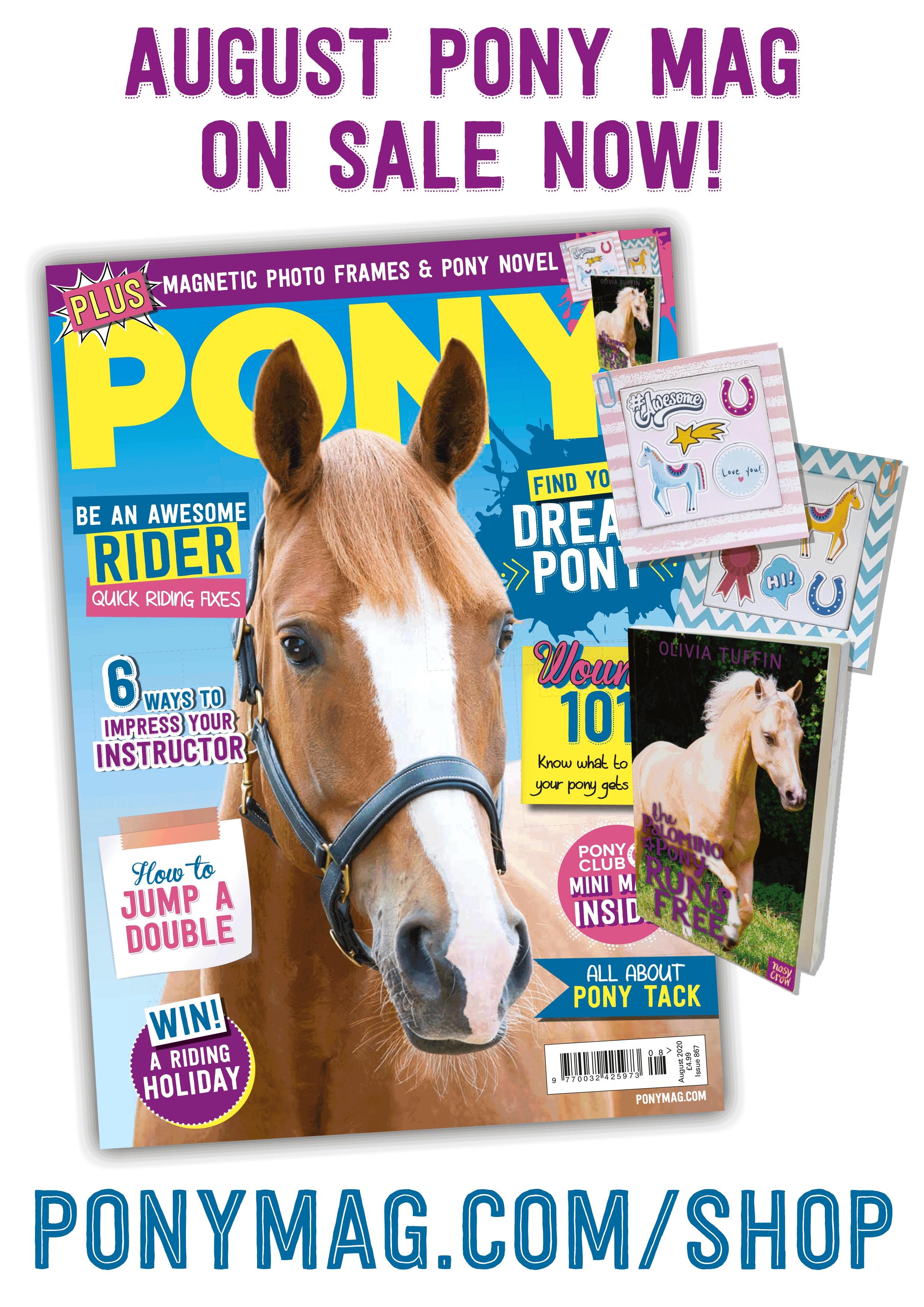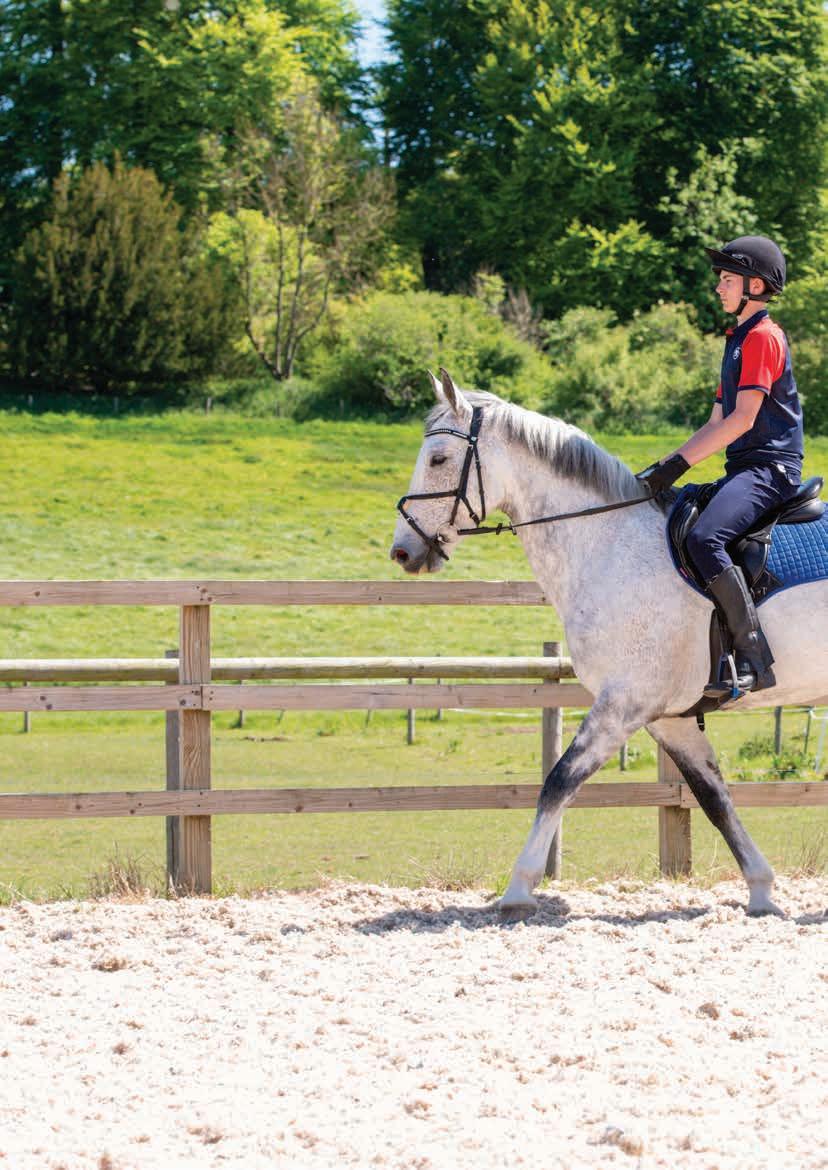
8 minute read
front of you, then relax it down by your side. Do this two more times, then change the rein and try it with your other arm
WOUND WOUND 101 OUR EXPERT What to do if your pony

Advertisement
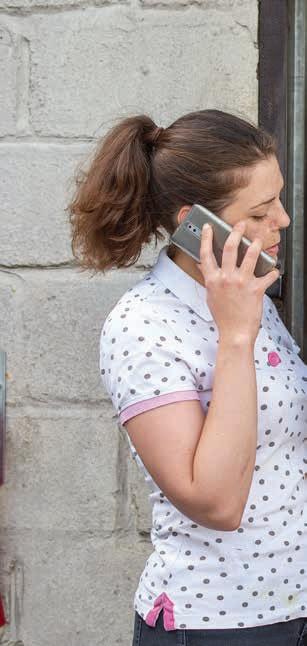
Rachel Schneiders is an Equine Vet at Gillivervet in Garwood, Lancashire.
did you know?
If your pony treads on a nail, don’t pull it out – leave it there until the vet arrives. This is because taking an X-ray of it in place is the only way to see whether important structures inside the hoof are damaged.
suffers a wound






Despite being beautiful, intelligent and athletic creatures, ponies can be pretty accident-prone and get themselves into all sorts of mischief! While it’s worrying to fi nd your fave pony has been injured, it’s really important not to panic, and to get him the right help as soon as possible. Here are some tips to help you know what to do if he suffers a wound...
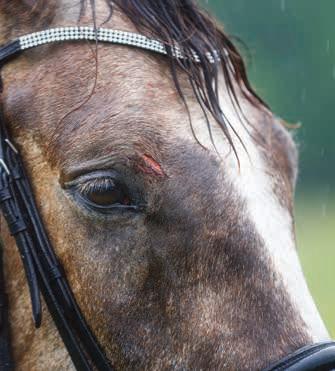

ACTION STATIONS
If you fi nd your pony with a wound, the fi rst thing to do is call an adult, such as your yard manager, who’ll help you assess the injury. Here are a few other important things to think about... • don’t approach your pony unless you’re sure it’s safe to do so. Even the quietest, calmest pony can be really scared if he’s injured, which means he could hurt you by accident. It’s best to wait until an adult gets there • • if your pony’s really lame, can’t move or is lying down, leave him where he is until the vet arrives • • if the wound’s bleeding, but it’s a slow drip of blood, remember that it probably looks more dramatic than it is. However, if blood’s squirting out or there’s enough to make a puddle, you should put pressure on the wound straightaway. Use something clean and absorbent like lint-free cotton wool to apply constant pressure, and secure it in place with a bandage. Put another layer on top if any blood seeps through. if there’s something sticking out of a wound, it can be best to leave it until an adult arrives. If they decide to remove it, photograph it in the wound fi rst, and keep the object until the vet arrives. It’ll help them work out what damage it has caused
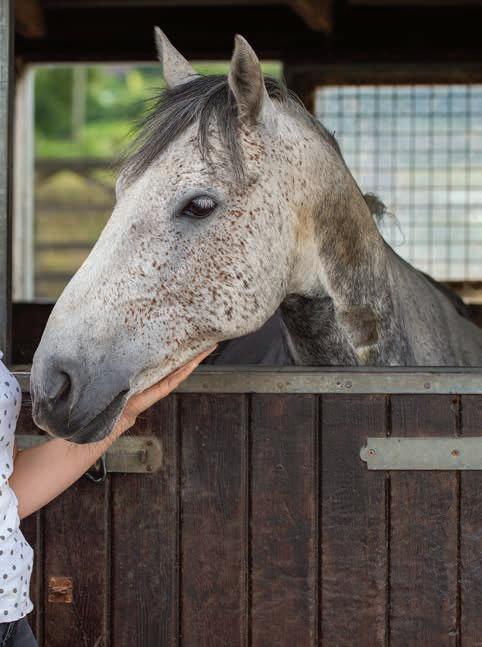

If a wound’s squirting blood, apply pressure until the vet arrives
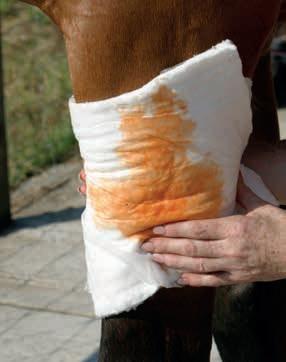
SHOULD I CALL THE VET?
It’s best to call your vet if your fave pony suffers any wound, even if it doesn’t look that bad. Sometimes, it’s the smaller ones that are the most serious. Tiny puncture wounds can be life-threatening, especially if they’re really deep and near one of your pony’s joints. Also, any wound can become a problem if it gets infected, so even grazes need careful cleaning, and you should keep a close eye on them.
As a general rule, wounds less than a couple of centimetres long, that are only skin deep and not on the legs or head, can usually be managed by bathing with salt water and applying antiseptic cream twice daily (ask your vet to recommend one). However, it’s superimportant to look out for any signs of... • swelling • redness • discharge • pain If you see any of these, call your vet straightaway. Top tip
Take photos of your It’ll be a fascinating record problem signs quickly.
did you know?
One teaspoon of salt mixed with 1 pint of water makes a weak antiseptic solution that can be used to clean
pony’s wound every day. of the healing process, plus it’ll help you spot any
BE WOUND SAVVY
If you’ve called out your vet, you can help prepare for their you can help prepare for their visit by following these dos visit by following these dos and don’ts... and don’ts...
minor wounds.
water ready. water ready. DO fi nd your pony’s DO passport so the vet can passport so the vet can check if his vaccinations are check if his vaccinations are up-to-date. up-to-date. DON’T put any products on the wound, like a spray or powder while you’re waiting for the vet. It means the vet won’t be able to assess the damage properly.
DO DO get some clean, warm DON’T give your pony any painkillers, unless the vet tells you to. It’s useful for them to see how much your pony’s hurting, so they can work out how serious it is.
Best of breedbreed
Find your perfect native pony
From Shetlands to Connemaras, there are tons of awesome pony breeds that come from the UK and Ireland. They’re super-clever and hardy, making them fab riding ponies, but which one would be the perfect pony pal for you? Find out what makes each breed unique with our super-useful fact fi les on the top 10 native breeds!
SUPER-CUTE

SHETLANDS
From: The Shetland Isles Height: 7hh–11hh Looks: Short with stocky legs, a fl uffy coat and a long mane and tail, plus they’re super-adorable! Known for: Being clever, tough and good with children. Popular for: Often used as a child’s fi rst pony. They also do well in showing, driving and, of course, Shetland pony racing! Character: They have a reputation for being a bit stubborn!
FUN FACT Shetlands come in every colour, except spotted.

FUN FACT New Forest ponies have been around since the Ice Age!
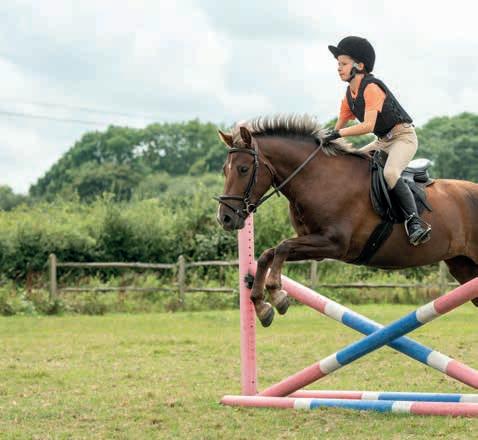
NIMBLE NEW FORESTS
From: The New Forest, Hampshire Height: 12hh–14.2hh Looks: Fine and athletic with powerful hindquarters. They’re usually bay, black chestnut, grey or roan. Known for: Being speedy, sure-footed and friendly. Popular for: New Forests make great Pony Club ponies, and can turn a hoof to dressage, showjumping, cross-country and mounted games. Character: They’re super-smart, so you’ll need to keep a close eye on them!

Top Tip Native ponies love food! As they’re designed to live on sparse moors and mountains, their grazing should be restricted so they don’t eat too much and become overweight.
did you know?
Shire horses and Clydesdales are native to the UK as well, but they’re too big to be classed as children’s ponies!
DREAMY
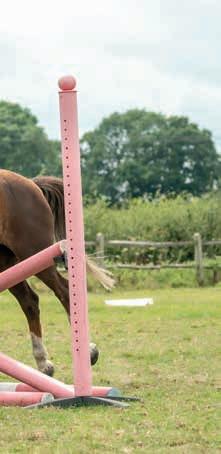
DARTMOORS
From: Dartmoor National Park, Devon Height: 11hh-12.2hh Looks: Small head and body with large, kind eyes. They also have a full mane and tail and rounded, muscular hindquarters. Known for: Being gentle, reliable and super-calm. Popular for: They make fab children’s ponies, and can also excel in dressage, showjumping and hacking. Character: They’re adorable, so it’ll be hard to stay cross with them if they’re a bit cheeky!
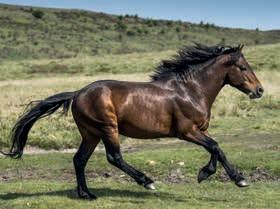
FUN FACT N ot all ponies you see grazing on Dartmoor are the true breed, as locals are allowed to graze any type of horse on the moorland.

GORGEOUS

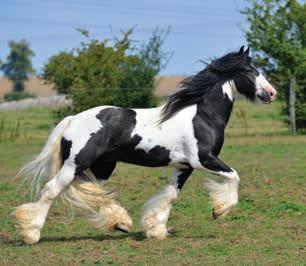
GYPSY COBS
From: Different regions of the UK and Ireland Height: 12hh-16hh Looks: Usually piebald, but can also be skewbald, tri-coloured or even a solid colour. They’re a well-built breed, with an impressive amount of hair! Known for: Their kind nature, trainability and strength. Popular for: Cobs make good all-rounders, but are especially talented at driving and showing. Character: They’re good doers so you’ll need to watch their weight! FUN FACT Gypsy cobs go by a few different names, including Irish cob or Gypsy Vanner.
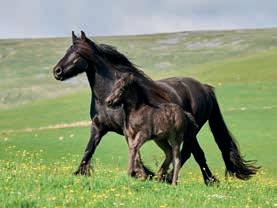

FABULOUS FELLS
From: Cumbria and Northumberland Height: 13.2hh-14hh Looks: Commonly pure black or dark brown, with very small or no white markings. They also have fl uffy feathers. Known for: Fells are agile, strong and tough. Popular for: Lots of Pony Club activities, but they also excel at hacking and cross-country. You’ll also see them driving and showing, too. Character: They’re often full of energy! FUN FACT The Queen has used Fells to pull her carriage.
CLASSY

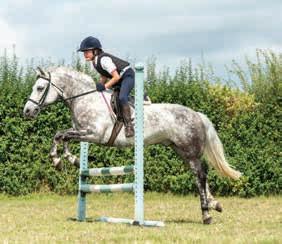
CONNEMARAS
From: Connemara, Ireland Height: 13hh–15hh Looks: Well-proportioned and compact, with stocky legs and kind eyes. Known for: Being athletic, versatile and sensible. Popular for: Everything! Connies are especially good at dressage, showjumping, eventing and hacking. Character: They’re super-playful and can get up to mischief, so you’ll need to make sure they have a fun, active home!


FUN FACT The Connemara is the only pure breed of pony that comes from Ireland.
